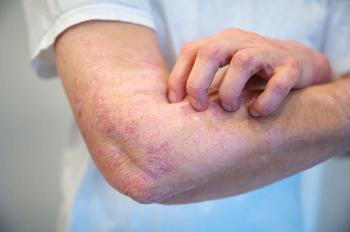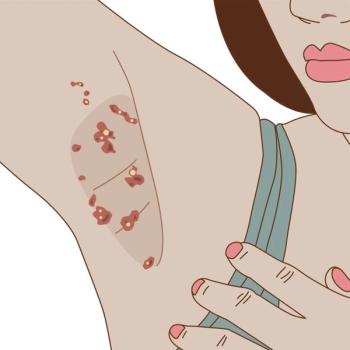
Go For The Glory Quiz: Livedo Reticularis; Persistent Fatigue; Groin Rash; Paraneoplastic Syndrome; and, a "Funny" Mole.
Livedo reticularis; persistent fatigue and weight gain; groin rash; paraneoplastic syndrome; funny mole.
QUESTION 1:
A 62-year-old woman was evaluated in preparation for cholecystectomy. She had no cardiac or pulmonary disorders. The physical examination was unremarkable other than a purplish red lace-like pattern on the skin. Livedo reticularis was diagnosed.
QUESTION 2:
A 34-year-old woman has fatigue that has come on gradually over the past 6 months, accompanied by a 5-lb weight gain. She had a viral syndrome 4 months earlier and had nodular sclerosing Hodgkin disease 4 years ago. The Hodgkin disease was limited to the chest and was treated with radiation and chemotherapy; 8 months ago, there was no evidence of the disease. Blood pressure is 125/90 mm Hg; heart rate, 65 beats/min, and temperature, 36°C (97.4°F). The WBC count is 4500/μL, hemoglobin level is 11.2 g/dL, and platelet count is normal.
QUESTION 3:
An older, obese, diabetic patient presents with intense itching and burning in the groin and on the scrotum.
QUESTION 4:
A 71-year-old man with fatigue, malaise, dizziness, syncope, and progressive weakness was transferred to the medical intensive care unit from another facility for weaning from mechanical ventilation. A chest film showed a mass in the right lung field. Bronchoscopic biopsy revealed limited-stage small-cell lung cancer (SCLC). The patient received one cycle of chemotherapy with cisplatin and etoposide. Assays of serum and cerebrospinal fluid were mildly positive for anti-Hu antibody. The patient was found to have paraneoplastic syndrome associated with SCLC and the presence of anti-Hu antibody.
QUESTION 5:
A 52-year-old man complains that his mole on his flank, present since birth, is “doing funny things.” In the center of this long-standing lesion is an exophytic, friable but hard, nodule.
ANSWER KEY:
Question 1. Answer: a
Question 2. Answer: b
Question 3. Answer: b
Question 4. Answer: c
Question 5. Answer: c
Newsletter
Enhance your clinical practice with the Patient Care newsletter, offering the latest evidence-based guidelines, diagnostic insights, and treatment strategies for primary care physicians.




















































































































































































































































































